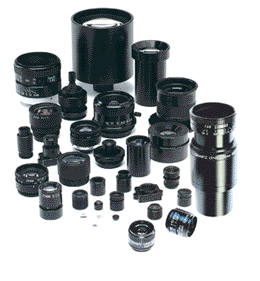High resolution lenses for machine vision — standard and custom lens design
Digital Imaging Enhances Medical Diagnosis
High Resolution Lenses for machine vision, instrumentation, inspection and vibration-sensitive applications. Standard and custom hi-res lens assemblies.

Digital Imaging Systems
Digital imaging systems involve the capture and creation of visual images of the organs, tissues and other body structures of patients; the images are then used by physicians to diagnose and prepare treatment plans for individuals.
A digital image uses magnetic fields, high frequency sound waves, gamma rays and x-rays to create the digital images of the internal body organs. Diagnosing the disease in a non-invasive manner allows the medical team to create an effective medical treatment plan.
X-rays are the most commonly used diagnostic device and view bones, stomach, liver and other internal organs. The x-ray beams are sent into the body, capture the image, and send it back to a computer for reading by the radiologist. An x-ray allows radiologists to view irregular bone structures and tumors.
Another type of x-ray is the fluoroscopy. This technique is used to assess moving images within the human body, such as the heart or for gastrointestinal systems. To affect this type of x-ray, the patient typically ingests a barium mixture that provides the necessary contrast within the organs or intestine. The radiologist views the movement of the barium and the distension of the organ.
An ultrasound, or sonographer, utilizes high frequency sound waves to image the body. A transducer, which is positioned over the skin on the area of the body being imaged, emits sound waves and the echoes emitted are transformed into an anatomical image that is displayed on a computer screen for the tech to interpret. Ultrasounds are typically used to assess a developing fetus, heart, gallbladder or kidney.
The Magnetic Resonance Imaging (MRI) system utilizes a high-powered magnet and radio frequency signals to create images that are then transmitted to the computer system. An MRI is used for the diagnosing of brain diseases, joints, soft tissue abnormalities and other medical uses.
To produce anatomical images, x-ray technicians utilize Computed Tomography (CT) technology. A CT produces a two-dimensional anatomic image; a 3D image can be captured through the use of specialized software. CT is typically used for reconstruction surgery. Because of the wide variety of diagnostic uses, digital imaging systems are an essential tool for physicians in the treatment and diagnosis of disease.